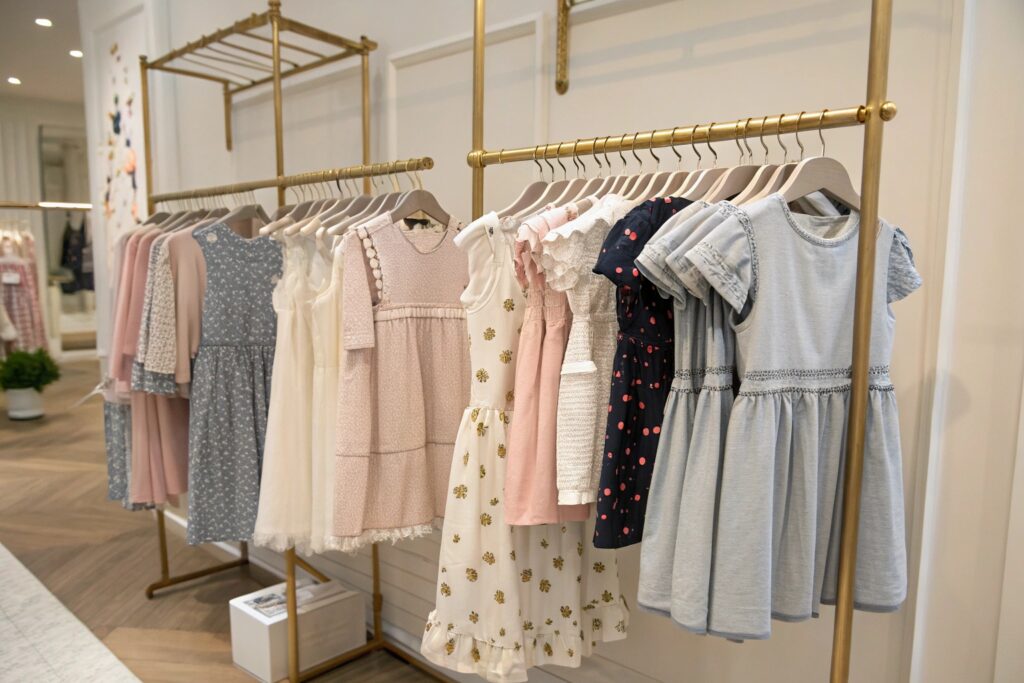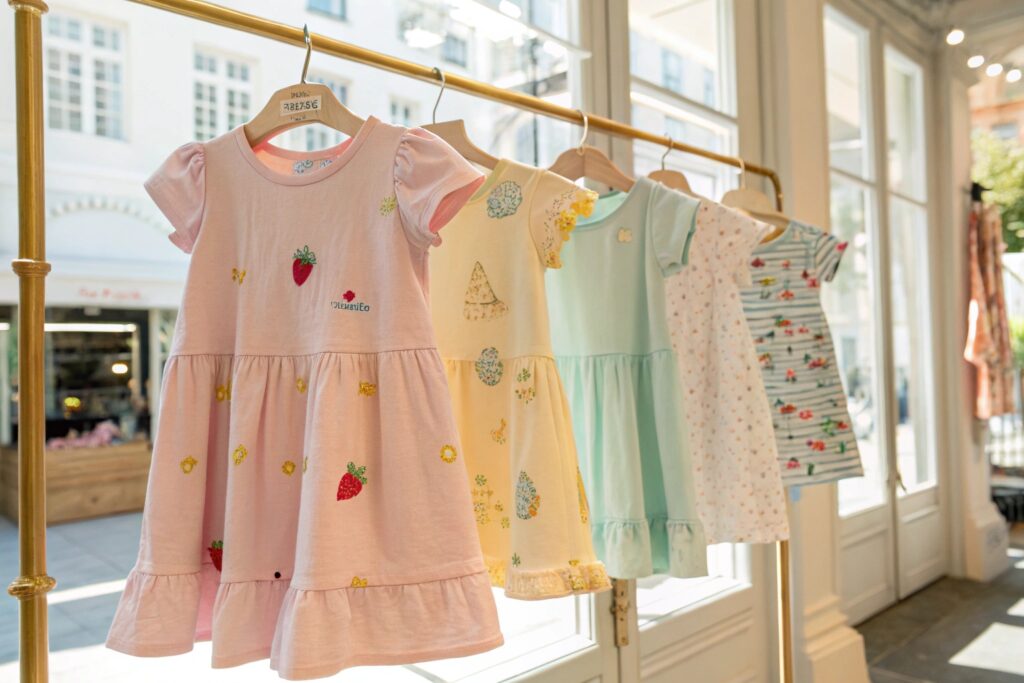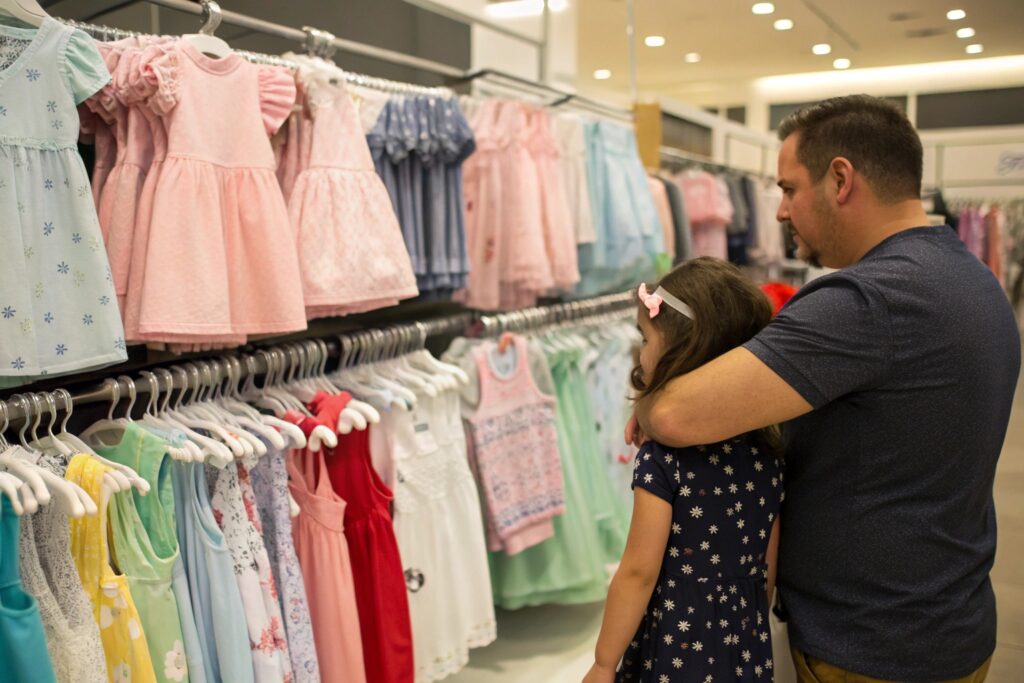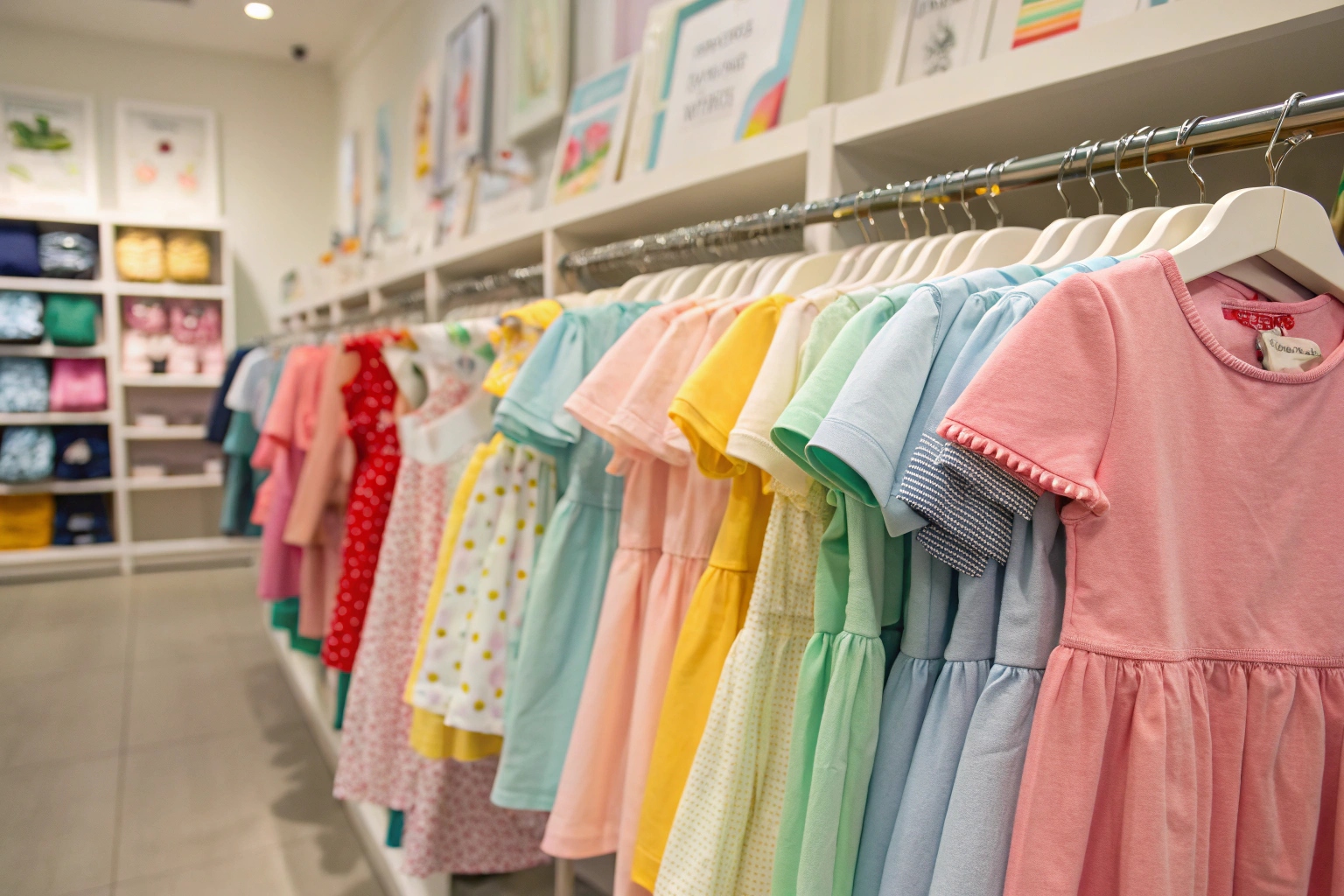Walk into any kidswear store and you’ll see a pattern—most girl’s dresses now come with short sleeves. What happened to the classic long-sleeve look?
Long sleeves in girls’ dresses have declined due to seasonal fashion trends, climate shifts, and increasing demand for comfort and flexibility in kidswear. Short sleeves offer style, breathability, and practicality.
As kidswear evolves, sleeve length is no longer just about warmth—it’s about movement, convenience, and matching today’s active lifestyles.
Trends in Girls’ Dresses: Rise of Short Sleeves
Retail racks are changing. From toddlers to tweens, girls’ dresses now favor short sleeves, flutter styles, or sleeveless cuts. It’s more than a phase—it’s a long-term shift.
Short sleeves have become popular in girls’ dresses because they align with modern design trends, visual aesthetics, and the growing influence of casual, minimalist kidswear styles.

What fashion trends have shifted design focus away from long sleeves in girls’ clothing?
Designers have embraced a simpler, playful, and breezy look in girls’ dresses. This change is visible across all markets—whether you’re looking at budget kidswear or premium boutique labels.
Key fashion movements include:
- Miniature adult styling: Short sleeves mirror women’s fashion trends, making "mommy-and-me" sets easier to design.
- Casualization of kidswear: Dresses are no longer reserved for formal events—they’re now styled for playgrounds and daily wear.
- Photogenic designs: Short sleeves frame the body better in photos, making them more attractive for brand marketing and influencer posts.
From our experience at Fumao Clothing, more than 70% of our kidswear bulk orders now specify short sleeves. Buyers cite "seasonless styling" and "parent preference" as key reasons.
How has the global kidswear market influenced sleeve design in dresses?
Global trends often start in the U.S. and Europe and spread fast through wholesale networks. Fashion-forward countries have leaned heavily into summer-first silhouettes—dresses that can be layered when needed but work well alone.
Even high-street labels now offer transitional dress designs:
- Short sleeves with detachable cardigans
- Puff sleeves that mimic long sleeves in style but not function
- Knit or jersey fabric blends that offer warmth without length
These designs offer flexibility for all-year wear, making long sleeves feel less necessary in most product lines.
How Climate Affects Sleeve Design in Kidswear
Climate isn’t just a background factor—it directly shapes what kids wear. As temperatures rise, long sleeves in dresses are becoming seasonal rarities.
Climate change and warmer indoor/outdoor environments have made short sleeves more practical and comfortable for girls’ dresses. Long sleeves often lead to overheating and layering complications.

How do rising global temperatures influence sleeve choices in kids’ clothing?
As global temperatures steadily climb, the demand for lightweight, breathable kidswear is growing. Even traditionally cold regions now experience milder seasons, reducing the need for full-sleeve garments.
Here’s what this means for girls’ dresses:
- Increased indoor time: Schools, malls, and homes often run heating or A/C, making heavy sleeves unnecessary indoors.
- Year-round mild weather: Spring and fall now stretch longer in many regions, reducing cold-weather dressing periods.
- Layering culture: Kids often wear jackets over dresses—short sleeves prevent bunching and keep them from overheating.
In production, we’ve seen orders shift dramatically. A decade ago, most Fumao clients requested long sleeves for girls’ winter dresses. Today, they prefer short-sleeve options paired with a matching outer layer.
What regions have moved away from long sleeves fastest in girls’ fashion?
Our clients in Southern U.S., Southeast Asia, Southern Europe, and the Middle East now almost entirely avoid long sleeves in casual girls’ dresses. Instead, they prioritize:
| Region | Sleeve Preference | Climate Factor |
|---|---|---|
| Texas, USA | Short or sleeveless | Hot summers, mild winters |
| Spain | Short sleeves | Long transitional seasons |
| UAE | Sleeveless with covers | Intense heat, air-conditioned spaces |
| Singapore | Cap sleeves | High humidity and year-round heat |
The practical need for breathability and easy movement far outweighs the traditional use of long sleeves—especially in warmer economies.
Parent Preferences Shaping Sleeve Length Choices
Behind every purchase is a parent making practical decisions. For them, short sleeves solve more problems than long sleeves ever did.
Parents prefer short sleeves for easier layering, better hygiene, lower maintenance, and overall convenience. These choices guide brands and manufacturers in sleeve design.

How do laundry and care routines affect parents’ sleeve preferences?
Let’s be honest—kids get dirty. And long sleeves often:
- Drag through paint, food, or dirt
- Require more careful washing
- Shrink or warp faster with frequent cycles
Short sleeves are easier to clean, dry faster, and stay neater longer. Many of our clients in North America have told us this directly: fewer sleeve stains = fewer returns.
Also, when using blended fabrics like cotton-poly or jersey knits, short sleeves maintain shape better after 10+ washes. That durability leads to better resale or hand-me-down value, something many parents consider today.
What are the layering advantages of short sleeves in kids’ wardrobes?
Short-sleeve dresses offer more flexibility:
- Can be worn alone in summer
- Easily layered with long-sleeve shirts, cardigans, or jackets
- Less fabric to bulk under coats or rainwear
- Stay comfortable indoors, even when outerwear is removed
At Fumao Clothing, we’ve helped brands build “layered looks” into their marketing—offering a short-sleeve dress bundled with a coordinating cardigan. This gives the parent full seasonal value without changing the base garment.
Comfort and Mobility in Modern Girl’s Fashion
Kids don’t sit still. Their clothes shouldn’t slow them down. That’s why short sleeves have taken over—they allow movement, comfort, and freedom to play.
Girls’ short-sleeve dresses provide better mobility, reduce irritation, and adapt to active lifestyles. Comfort-first design drives modern kidswear trends.

How do sleeve lengths impact comfort in school or play settings?
Long sleeves can:
- Ride up during play
- Feel hot or tight under armpits
- Catch on desks or playground surfaces
- Distract kids with itchy seams or excess fabric
In contrast, short sleeves:
- Stay out of the way
- Let air flow through the body
- Pair easily with all types of jackets or uniforms
Some of our buyers supplying to school districts have told us that kids often roll up their long sleeves—proving the design itself isn’t suitable for their activity levels.
As a result, short sleeves aren’t just stylish—they’re practical for everyday comfort.
Why are kids’ opinions now shaping what designs brands produce?
Today’s young shoppers have more voice. Between YouTube, TikTok, and parental feedback loops, brands now listen to the kids themselves.
And kids tend to choose:
- Brighter colors
- Lighter feels
- Easy on/off
- Room to move
Short sleeves check all those boxes.
We once ran a small survey with our partner brand in Australia and found that 76% of girls aged 5–10 said they preferred short sleeves “because they feel better.” That’s a simple but powerful truth—and it reflects across our wholesale data year after year.
Conclusion
Girls’ dresses don’t have long sleeves anymore because fashion, climate, and real-life comfort have changed. Short sleeves now define a new kind of practical, stylish, and seasonless kidswear.










